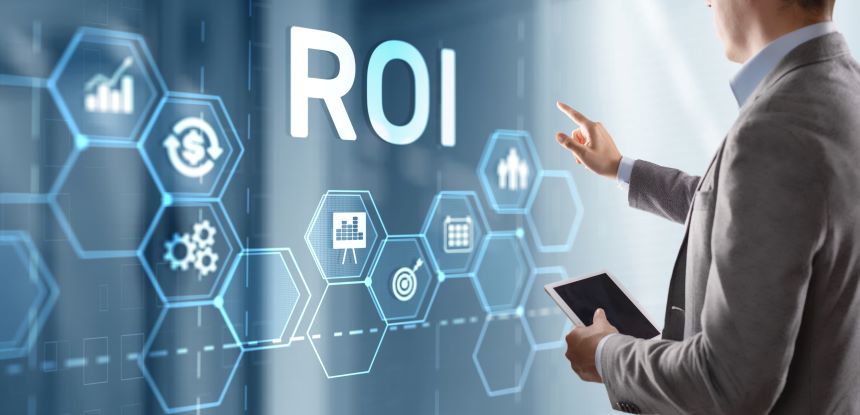
Triggered largely by learners’ ask, the changed workplace dynamics has brought Social Learning to the fore. In this article, I outline how L&D teams can build a corporate learning community by leveraging Social Learning.
What Is a Corporate Learning Community, and How Does It Facilitate Learning?
A corporate learning community is the coming together of like-minded individuals, from across an organization, to form learning circles and pursue the idea of group learning.
The idea of forming such communities is grounded in the theory of social behavior and learning, which holds the view that workers, who belong to a learning circle, can acquire new cognitive skills, and learn new behaviors, by observing and imitating fellow community members.
Such learning occurs more effectively than formal classroom learning or other forms of formal learning. When successfully implemented, these communities help to promote a corporate learning culture that encourages knowledge sharing across the organization and supports company-wide L&D initiatives.
Why Should L&D Teams Build Professional Learning Communities in Organizations Now More than Ever?
In the new paradigm of remote work, there’s less time and opportunity for remote workers to learn through formal training methods. With a larger number of workers opting for remote work, workforces are now more hybrid – partly on-premises and partly remote – than ever. To further their learning opportunities, both groups of learners require a learning model that’s different than the traditional distance learning approach – A corporate learning community helps connect the two groups to bridge those divides.
Since many of these employees are isolated from peers and colleagues, collaboration and cooperation become more challenging in a hybrid workplace. Learning circles drive collaborative learning in a hybrid work world. Most importantly, learning through social circles promotes knowledge sharing among hybrid workers, as it connects everyone through a shared goal – of learning from each other.
How Do Corporate Learning Communities Drive Employee Development?
Organizing a corporate learning community is a great way to leverage learning at scale.
By putting employees in charge of their learning, L&D can then step back and play a supporting role, instead of dictating when, where, and how learning occurs. In today’s hybrid work environment, where continuous learning is critical, employees build a more diverse set of skills through social circles.
Learning communities also encourage the establishment of member-driven communities of practice and inspire better collaboration, coaching, and feedback among members and moderators (Managers, Supervisors, and L&D professionals). Through collective, peer-group encouragement, and “nudges,” individual community members are held more accountable to stay on track with their committed learning goals.
Why Is Social Learning Essential to Build a Corporate Learning Community?
According to the 70/20/10 Model for Learning and Development, only 10% of learning happens through formal training – 90% happens through learning from others. In today’s remote work environment, this makes social learning an invaluable tool for learners and employers. From a hybrid learner’s perspective, having a thriving corporate social learning circle empowers 90% of your workforce to engage in meaningful learning in the workplace. From the corporate point of view, collective learning can connect virtual disengaged learners, help remote learners self-organize, and facilitate collaborative learning to fulfill a broad spectrum of learning needs.
How Can You Leverage Social Learning to Build a Corporate Learning Community?
With 83% of respondents to an Accenture survey, on the future of work, acknowledging remote working is a new reality, it’s clear that the hybrid working model is here to stay! However, an employee experience survey by Forrester Consulting indicated that only 50% of those surveyed believe that they are provided with the learning, coaching, and training opportunities required to grow and excel at their jobs under this brand-new work model.
Clearly, L&D teams have not, as yet, learned how to leverage social learning.
In today’s hybrid work world, social learning plays an even greater role than before, because it’s far easier for remote workers to join an online community of learners than it is to meet in person for learning. By delivering broad-based training and learning opportunities to every employee – whether they’re remote or in office, a corporate learning community not only creates a more inclusive workplace but it also enhances the overall learning experience and employee experience in the hybrid work world.
What Social Learning Strategies Can Help You Build a Corporate Learning Community?
A good social learning program brings together a diverse array of social media elements, including hosted discussion groups, blogs, podcasts, video links, wikis, etc., and combines them with the following strategies:
- Forums: Decide how to group the community – work teams/by topic/by department – to best manage member queries and deliver support.
- Interaction: Encourage interactions and engagement by promoting discussions, sharing, opinions, and contributions among community members.
- Promotion: Market your community and connect learners. Actively encourage employees to join your corporate learning community.
- Curation: Carefully curate your learning resources, including Microlearning and mLearning content, to whet everyone’s appetite.
- Gamify: Inject fun, encourage competition within the community, and target specific learning outcomes through gamification. Badges, points, competitions, and leaderboards add to the thrill.
- Leverage user-generated content (UGC): UGCs are the hallmark of social learning, through which community members help other members learn.
Example – Corporate Learning Community in Action
“Community” is about engagement, cooperation, and sharing, and that’s what L&D leaders must strive to achieve when building their own corporate learning community. Here are three examples of how to build a successful community:
- Representation
If the intent is to develop an organization-wide community to foster learning about a new Learning Management System (LMS), Payroll, or HR application, it would be a clever idea to pull together SMEs from each stakeholder group to provide leadership to the community on a broad range of subjects, such as IT, Policy & Procedures, “How to…” advice, etc.
- Participation
A successful learning community is only as good as the broader participation of its members. And to encourage participation in social learning circles requires the involvement of a designated “champion” for that community. This role (distinct from SMEs) must function as motivator-in-chief and chief cheerleader. A good example would be a moderator role for a community targeting a broad adoption of the company’s Health & Fitness initiative, which egg on community members into greater participation.
- Recognition
Humans are social creatures, and we all crave acknowledgment and appreciation for our individual contributions. One example of bestowing recognition, to individuals in a corporate learning community, may be by assigning them digital badges that give them peer acknowledgment for achieving certain milestones – Fastest module completion, highest scores on assignments, zero production defects, best workplace improvement suggestions, an employee of the month, etc.
Use Case: An example of pulling together these strategies might be to motivate a community of learners into broad participation in the organization’s Corporate Safety Week.
- Promote the event through blogs and videos, flyers, and posters. Designate Safety Coordinators from each functional area of the company – Loading Dock, Assembly, Administration, HR – are to function as SMEs for applicable safety situations.
- Next, nominate a “champion” to use IMs, online discussion groups, and chat sessions to encourage the workforce to engage and participate in the event.
- Finally, recognize greater social learning participation through awards and special privileges so employees receive peer recognition for their efforts.
Parting Thoughts
In today’s hybrid work environment, bringing a disparate group of corporate learners together is a Herculean challenge and a corporate learning community can help bridge that gap.
However, success with such communities depends on finding the right representation, fostering broad participation, and creating enthusiasm and engagement in the community. This can be done through techniques such as online forums, gamification, content curation, user generated content, and microlearning and mLearning.
I hope the strategies shared in this article provide you with the requisite cues to help L&D teams embrace social learning as a viable learning model.
Meanwhile, if you have any specific queries, do contact me or leave a comment below.
Read More
- eBook: How to Conduct a Comprehensive L&D Audit and Prepare a Strategic Plan for the Future
- Creating Powerful Employee Training With Social Learning – Featuring Microlearning Videos
- 3 Killer Examples On How You Can Use Microlearning, Gamification, And Social Learning To Engage Millennials In The Workplace
- 6 Must-Have Workplace Learning Strategies for the Hybrid Workplace
- How to Design, Integrate, and Deliver Job Aids to Increase Learner Engagement and Drive Performance



